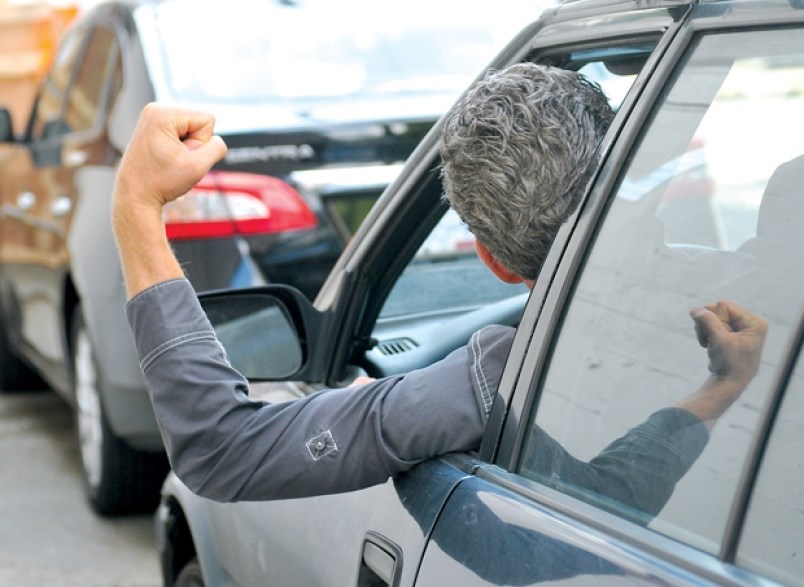Human beings are creatures of vision.
It’s why movies were invented before smell-o-vision, why we need to catch the waiter’s eye instead of just yelling at him, why the way we look often informs a first impression. There are good sides and bad sides to relying on our eyes so much, and where driving is concerned, I’m afraid it’s very much the latter.
Let’s wind the clock back to last Tuesday, where you will find me on the westbound Capilano Road onramp, throttling the driver of an SUV to death. Well, not really – but in my mind’s eye, I certainly was. Here’s the issue: once again, I’d come to a halt at the apex of the curve because there were two cars stopped ahead at the very point of where the onramp touches the highway. I’d left a gap in order to get safely up to highway speed when the way was clear. The driver of the SUV decided to go around me on the right.
Now, the Capilano onramp is stupidly dangerous, and I think we can all agree it should be re-engineered in some way. I’ve written about it before, and heard from many drivers who completely hate it.
Secondly, I think we can also all agree that courtesy died on the road a long time ago, crushed to death beneath the wheels of our two-tonne metal behemoths. On the pavement, on foot, we’re relatively nice to each other. Strap into an SUV and we apparently feel an instant urge to drive like jerks.
For the moment, let’s briefly discount these two factors. The problem here wasn’t primarily that the SUV driver was flummoxed by the badness of the onramp’s design, nor that he was a self-entitled blankety-blank, it’s that he wasn’t using his vision properly. In other words, he was looking at me, instead of looking at where he was going.
This state of affairs is altogether too common on the road, and is the cause of traffic jams, accidents, near-misses, and pretty much every bad thing about wheeled transport. It’s the first thing you learn at any racing school. Never mind cornering speeds, never mind mastering weight transfer – the first thing you need to learn is how to see properly.
So let’s come back to our curving onramp. I’m third in the line of cars coming around towards the highway, so where am I looking? For the brake lights of the car in front of me? Nope – I couldn’t even tell you what marque it is. I can see that car, but I’m not looking directly at it. Instead, I’m looking ahead of both cars I’m following to see whether there’s an obstacle in the road. Because I can’t see that the way is absolutely clear, I’m also slowing in preparation.
On a track, focusing on the bumper of the car ahead of you is called target-fixation, and it almost always results in a collision. Instructors will tell you to look first and let your hands follow; you look for the corner’s apex, look for its exit, look as far down the track as you possibly can. Forget about the car you’re following, just keep it in your peripheral vision.
Even if you’re not driving a car at anything like its limit, keeping your eyes up and looking down the road is simply the safest way to drive. You can anticipate road hazards, and even dodge a traffic jam or two if you see things beginning to slow far ahead.
Let’s move from ordinary driving to an emergency situation. You’re driving down a narrow country road when a deer leaps out in front of you. The thing to do is brake as hard and fast as you can, but where should you be looking? Answer: anywhere but at the deer. When people look at things, they tend to hit them, and looking at a fast-approaching object is simply too much information for your brain to handle. If you look further ahead, your brain won’t go into panic mode, and you’ll be able to avoid the urge to swerve wildly or make other bad decisions.
The other part of managing your vision is thinking about how others see. Most modern cars have large blindspots, thanks to safety regulations mandating thick pillars, and styling attempts often making things worse. In your own car, you can combat the rearward blindspots by setting your side mirrors just beyond where you can see the sides of your car.
But assume that the driver you’re passing hasn’t got their mirrors set properly, and can’t see you. This is something most skilled motorcyclists think about, as they’re so vulnerable; riding along in the blindspot of a car is a good way to get yourself killed. As for cars, just because you’ve got more metal around you than a biker doesn’t mean it’s a good idea for you to hang out in the danger zone.
Back at the ramp, I moved my car over to the right a little to block the dangerously impatient SUV, waited a pause or two until traffic provided a safe gap, then zipped up to speed and merged safely. I glanced in my mirror to see him drive to the end of the ramp and then brake to a stop because he hadn’t been watching traffic flow.
I didn’t see him again after that, but then again, I was looking ahead.
Brendan McAleer is a freelance writer and automotive enthusiast. Email: [email protected].



